Glasfryn Seminar: Two Angles on Modernism
These materials via Junction Box, where you can find the continuation of these two takes & a range of other fascinating materials.
On March 28th 2015 a seminar was held at Glasfryn in Llangattock, Powys, on the subject of modernism. There were two presenters: Allen Fisher and Anthony Mellors. Fisher discussed developments in art dating from around 1850 with reference to the evolution of a recognisably modernist aesthetic, whilst Mellors concentrated in particular on questions of the nature of the image in modernist poetry, both in terms of theory and practice, referencing Marjorie Perloff’s critique, and looking particularly at poems by William Carlos Williams, Lorine Niedecker and George Oppen. The documents gathered here include, on Fisher’s part a prose extract and a kind of diagrammatical schedule from which he developed his presentation on the day. Mellors’ essay represents a step beyond the material he based his presentation on, but should be considered as a work in progress.
To Read Modernism in Three Parts (For the Glasfryn Seminar), by Allen Fisher: Click Here
Allen Fisher: Extract from Collage and Simultaneity.
The following is an extract, taken from the third part of a talk given at the Glasfryn Seminars, 28 March 2015. The extract uses a painting by George Braque titled Soda (see above), a work factured in 1911 and now in the collection of the Museum of Modern Art, New York. The painting is oil on canvas and is a tondo (circular) with a 36cm (14”) diameter.
George Braque’s painting Soda is a collage of shapes derived from the perception of drinking glasses, cups, smokers’ pipes, letters, music-scores and an advertisement for soda. In short, perception that could have been made in Braque’s studio or in a café. The painting plane presents these shapes as a variety of intersecting and overlapping planes without any overt suggestion of a counterfeit spacetime. Whilst all the elements could be inferred by the viewer to be fragments from reports of perceptions of objects on a round table, a table with a glass top. Braque has not made any attempt to persuade the viewer that this may be so. On the contrary, his presentation as much implies a verticality as if the perception report was of objects fixed to a wall and prepared to provide a trompe l’oeil by a painter such as John F. Peto. (The example given was of Peto’s Fish House Door, 1905, in the Dallas Museum o f Art.)
To the right of the centre the bowl of a smoker’s pipe is suggested and a use of colour contrast implies the bowl’s depth. The remainder of the picture plane consists of lines and curves which balance and counter-balance the pattern of the smoker’s pipe bowl.
In many places on the plane a music-score is signified using Braque’s characteristic bar lines (usually less than five, but nevertheless signifying musical scores) which become ambiguous with the suggestion that perhaps the strings of a musical instrument are implied. The part circles sometimes appear as marks left by drinking-cups or glasses and sometimes appear as fragments from perception reports of those vessels. This pattern is shifted by the repeated inclusion of Bas Clefs. Other lines on the plane suggest parts of smokers’ pipes, edges of planes and, particularly the more vertical and wavy lines, strips of wallpaper in Braque’s now recognisable faux-bois (imitation wood). On some parts of the plane a depth perspective is hinted at through the use of angled cornered lines with shading. At one place, on the lower right, the word SODA has been painted and part of the “S” has been intersected and cut off by a white line which implies an overlapping plane. The overall picture plane is full and some of the lines approach the plane edges (particularly at the top and bottom and left hand side) which has the effect of controlling the array of shapes, of containing them into a pattern of connectedness. It is a pattern that connects intrinsically shape against shape and referent against referent; and because of the report of commonplace objects implied and particularly the “SODA” advertisement, connect extrinsically to everyday life in the society Braque participates in.
Through these relationships, both intrinsically and extrinsically, Braque presents an æsthetic complex that moves and delights the viewer and in addition signifies the manners of the society he appears to be in contemplation of: drinking and smoking his pipe in the presence of music. The mode of facture, however, adds to these considerations. All of the patterns of connectedness so far described might, hypothetically at least, have been derived from a variety of painting practices such as Realist, or naturalistic, Still-life, or even from Idealist trompe l’oeil. Braque’s decision to facture in the mode of image-collage therefore ramifies the manners first extrapolated from the patterning.
The image-college, that this painting exemplifies, derives its patterning, the shapes made by Braque’s facture with oil paint on canvas, from perceptions made in Braque’s daily life. The depiction of these perceptions have been deliberately fractured and fragmented. Such fragmentation can partly be understood as an activity of pattern-selection, in which Braque partly insists on his referents (for example the parts of the smoking-pipe) and partly insists only on the shapes necessary to carry out the overall pattern of his chosen circular canvas. But a much broader concern must now be considered. Braque’s facture offers the implied depictions of many planes and also presents these implications as overlapping and intersecting, adding to the fragmentation already apparent from the selected parts of depicted objects. This intersecting and overlapping has the effect of fracturing the spacetime into many spacetimes, offering hints of counterfeit spacetime and immediately breaking any expectation from the hinting. It is an expectancy, perhaps, a viewer may have from having encountered other paintings, but it can never be naturalised. The frequent tendency in viewers to give anecdotal referentiality to picture planes as if they depicted natural spacetimes is prevented here by Braque’s facture. The realism of the painting is the painting itself. The frequency of breakage, of broken expectations, of ambiguities in spacetimes, also leads to comprehending the work as part of an explicit programme of discovery. At the same time the presentation is not about discovery, but what has been found. It becomes an appraisal, and even in part a homage to, earlier paintings in that its innovation relies on the paradigmatic constellation of earlier art in order to break part of those paradigms and innovate into the production of a new paradigm. This innovation is in fact concomitant with parallel phase shifts in western humankind’s comprehension of the world.
Image-collage of the kind described above is not George Braque’s only mode of painting practice. If it was the above description would not alter. Because it is only one mode among others it may be worth considering the ramifications of this here. Many commentators view Braque’s work of this period (which they usually label Cubist) as part of a progression such that each innovation presents a step towards a linear expansion. What works like Braque’s Soda presents, however, need not be so considered. Soda is one of very many works in which Braque and Picasso are in conversation. Daily they exchange viewings and views in the period up until October 1914. Each new work presented what Braque or Picasso had found. In this sense they were innovating continually, but, as any viewer comparing the works of the period will soon comprehend, many of their innovations are lateral, or double-back on work already factured in order to comment again, but anew, on innovations previously made. In short, their work of the period can be considered as contributions to a discourse on æsthetics which both painters continue, differently and divergently to some extent, after their collaborations together, in the larger studio of the world. Their works from this collaborative period are intense exchanges, sometimes in contemplation and sometimes in exuberance, between two sensitive thinkers aware of their presence in a unique phase of European understanding that has shifted the subsequent attentions so radically that no one (presumably) would dare suggest whether humankind will ever recover. Viewing works by these collaborators from this period can be continual pleasure, but as importantly, a learning process that appears to be without exhaustion.
ALLEN FISHER is a poet, painter and art historian, website: www.allenfisher.co.uk. He has authored many publications of poetry, graphic work and commentary; recently: SPUTTOR, a book of the poetry, commentary and visual work (Veer Books 2014); The Marvels of Lambeth. Interviews & Statements, 1973-2005, edited by Andrew Duncan (Shearsman Books 2013); a collection of essays is forthcoming from the University of Alabama Press (2015). His visual work is in many collections in America, Britain and the UAE. In autumn 2014, Spanner Editions published TIP REGARD, a set of extracts from poetry in four projects. Allen is currently Emeritus Professor of Poetry & Art at Manchester Metropolitan University, one of Key poets at Voiceworks, Birkbeck College, University of London and Visiting Fellow at Northumbria University.
…………………………………………………………………………………….
Anthony Mellors: The Image.
I gave my first poetry reading at the age of eighteen with Gael Turnbull in a folk club in Great Malvern. I must have the poems somewhere, but I daren’t look at them. All I can remember is that a sequence of three were subsequently rejected by The London Magazine, which was not surprising since I misspelled the title and the pieces were full of wistful gestures and words like ‘chiaroscuro’. After the reading, a member of the audience came up and told me that she ‘really liked my imagery’. This pleased me, even though I was sceptical about the quality of my imagery, because I had read that imagery and the image were the essence of poetry itself. The notion of the ‘image’ has become so definitive of twentieth century poetry and beyond that we hardly question it. But what does it mean exactly? A trawl through dictionaries, encyclopedias, and internet poetry sites is as confusing as it is helpful: the image is a verbal representation of objects; it is literal and/or figurative language, the transfer of experience into sensual representation, ‘a compromise for a language of intuition which would hand over sensations bodily’ (T. E. Hulme), the transformation of real things into imaginative ones, the ‘res itself’ (Wallace Stevens); it is a kind of ekphrasis, it aspires to the condition of music; it is subjective, it is objective; it is direct and precise, or indirect and imprecise; it is things; it is ideas. Where does it come from? A frequent answer is ‘Nobody knows’. Yet, for all this conceptual vagueness, literary critic Frank Kermode argued in the 1950s that the ‘doctrine of the image’ is the single most pernicious influence on poetry since the Romantic period. And, more recently, Marjorie Perloff can argue that the Modernist image is redundant in an age of mass media. I will come back to these points. But to begin with I’m going to look at a specifically modernist approach to the problem.
According to Ezra Pound, Basil Bunting’s great contribution to poetics is his neat formulation
DICHTEN = CONDENSARE
‘That did NOT mean’, says Pound in his ABC of Reading, it was something more wafty and imbecile than prose, but something charged to a higher potential.’ In less condensed terms, this means that poetic saying is fundamentally a matter of compressing or packing words and concepts closely together. But Bunting, like Pound, means words and concepts when they take on the attributes of what he calls the ‘image’. While neither poet was particularly interested in the work of Freud, the choice of the term condensare inevitably connects with the discussion of condensation and displacement in The Interpretation of Dreams. Freud’s term for what Strachey translates as ‘condensation’ is Verdichtung, which means to compact. In the dream-work, Freud argues, repression takes two forms: displacement (Verschiebung, to shift, move), which means that new aims and objects are substituted for unpleasant ideas and feelings, and condensation, which means that the impulses behind a dream become translated into a jumble of images forcing together different impressions of the dream-thought at the level of similitude. The coincidental nature of these images is best described as symbolic. In linguistic terms, displacement corresponds with metonymy and condensation with metaphor. following this, we might observe that Pound and Bunting break their own rule. If poetic discipline is to avoid tautology, it fails here: since the word Verdichtung contains both ‘poetry’ and ‘compression’ in one, that is all we need to write. Except, as Pound says of this formulation, ‘Dichten’ is the German verb corresponding to the noun “Dichtung” meaning poetry, and the lexicographer has rendered it by the Italian verb meaning “to condense”.’ (ABC of Reading, 36) Verbal force is better than a noun: to poetize is to condense.
[ctd. here]
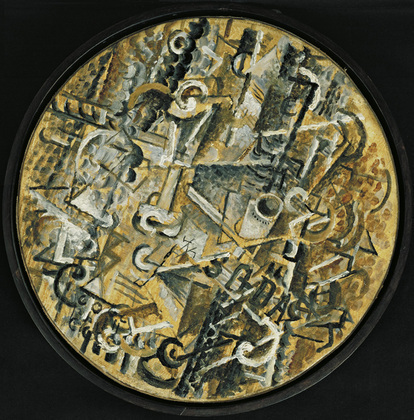

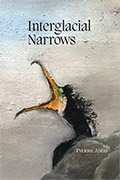 “Interglacial Narrows (Poems 1915-2021)” Contra Mundum Press
“Interglacial Narrows (Poems 1915-2021)” Contra Mundum Press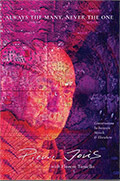 “Always the Many, Never the One: Conversations In-between, with Florent Toniello” Contra Mundum Press
“Always the Many, Never the One: Conversations In-between, with Florent Toniello” Contra Mundum Press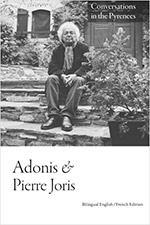 “Conversations in the Pyrenees”
“Conversations in the Pyrenees”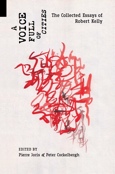 “A Voice Full of Cities: The Collected Essays of Robert Kelly.” Edited by Pierre Joris & Peter Cockelbergh
“A Voice Full of Cities: The Collected Essays of Robert Kelly.” Edited by Pierre Joris & Peter Cockelbergh “An American Suite” (Poems) —Inpatient Press
“An American Suite” (Poems) —Inpatient Press “Arabia (not so) Deserta” : Essays on Maghrebi & Mashreqi Writing & Culture
“Arabia (not so) Deserta” : Essays on Maghrebi & Mashreqi Writing & Culture “Barzakh” (Poems 2000-2012)
“Barzakh” (Poems 2000-2012) “Fox-trails, -tales & -trots”
“Fox-trails, -tales & -trots”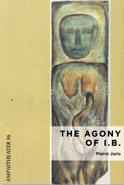 “The Agony of I.B.” — A play. Editions PHI & TNL 2016
“The Agony of I.B.” — A play. Editions PHI & TNL 2016 “The Book of U / Le livre des cormorans”
“The Book of U / Le livre des cormorans”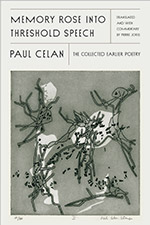 “Memory Rose Into Threshold Speech: The Collected Earlier Poetry of Paul Celan”
“Memory Rose Into Threshold Speech: The Collected Earlier Poetry of Paul Celan”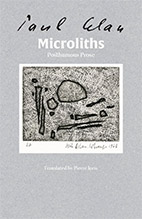 “Paul Celan, Microliths They Are, Little Stones”
“Paul Celan, Microliths They Are, Little Stones”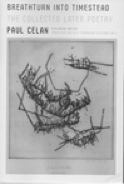 “Paul Celan: Breathturn into Timestead-The Collected Later Poetry.” Translated & with commentary by Pierre Joris. Farrar, Straus & Giroux
“Paul Celan: Breathturn into Timestead-The Collected Later Poetry.” Translated & with commentary by Pierre Joris. Farrar, Straus & Giroux